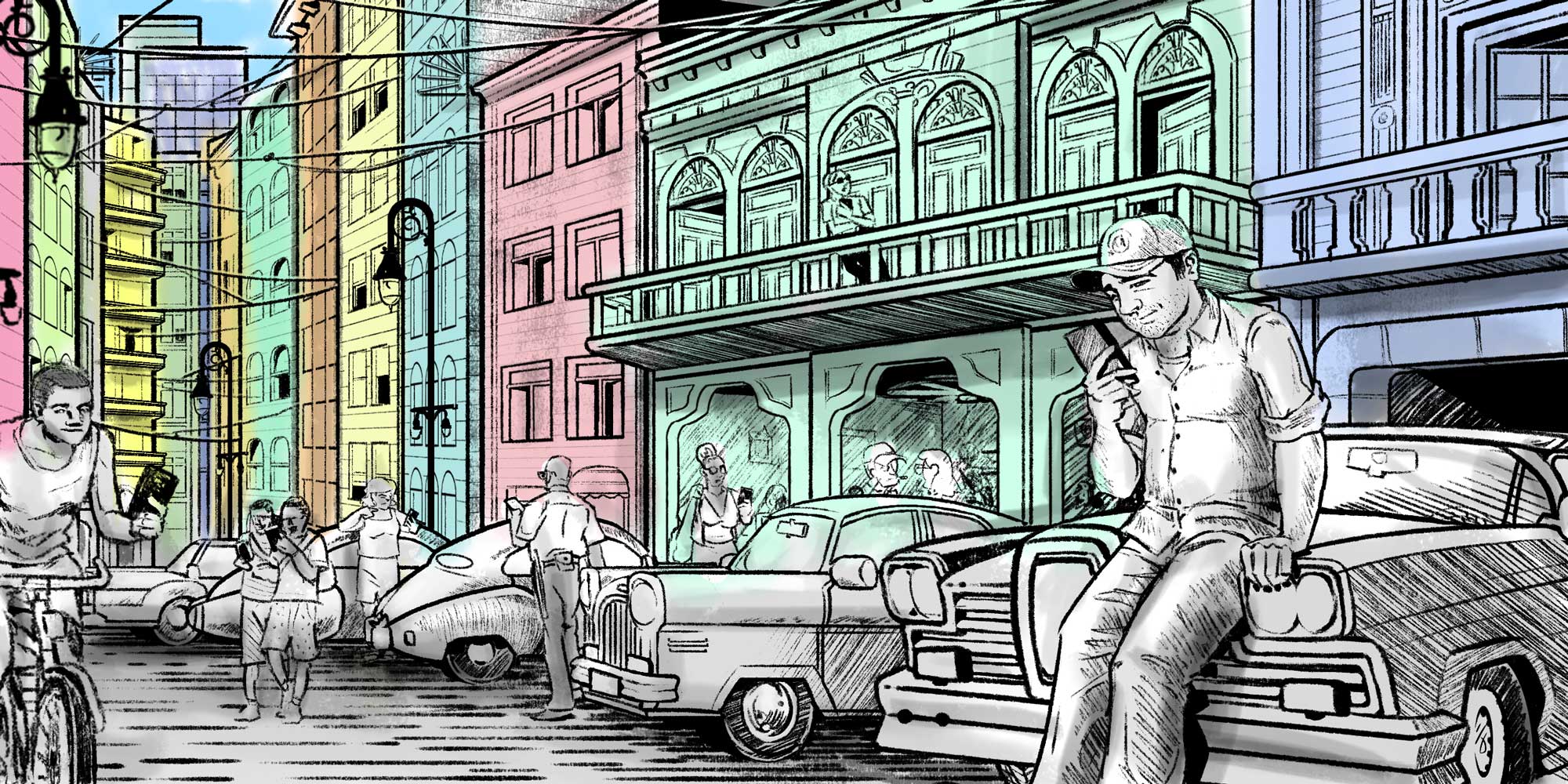Today is the last day of 34c3 and this year was amazing. There is a lot to talk about, a lot of information to digest, and so many new ideas to experiment with. I plan on writing a review of the talks I preferred and outline the take aways in a future post, but for now I'd like to talk about one presentation in particular: "The Internet in Cuba: A Story of Community Resilience". You can find the full video online. This talk gave me a lot of hope, and I will tell you why, but first, let's quickly summarize the situation in Cuba, regarding access to the Internet (most of the information is from the actual talk).
The only way to access the Internet in Cuba is through hotspots accessible in each city. This is not ideal for several reasons:
- There are not so many hotspots (~500 in the country, according to a recent estimation), which means that you need to go there to get an access and it's shared with many people: bandwidth is not great! (maximum 1 MB/s).
- It's expansive, about 1 CUC/hour (~1 euro per hour).
There are some alternatives, not sanctioned by the government:
- El Paquete, which is basically an external drive you can buy once a week, containing data dumped from the internet: TV shows, movies, etc. You can check this website to know more about what it contains: paquetedecuba.com (in http only!)
- WiFi sharing, where someone shares his connection to a hotspot with other people and make them pay a smaller fee (e.g.: using Connectify).
- Isolated networks.
This last point is the amazing one. There are multiple isolated networks such as Universities (and inter-Universities networks), but the most interesting are the ones called SNET, which stands for Street Network. In Havana alone, one such network connects more than 100k people. And it's not something provided by an FAI, it has been built from the ground up by people! And multiple other cities have it too, except they are not connected with each other. And they are not connected to the Internet either. In fact, this is forbidden, as it would be illegal.
It's hard to imagine how it got to that scale, but it has not always been that way. In fact, it all started as a multitude of much smaller gaming LAN networks used to play multiplayer games. They then realized that they could connect with each other, across streets, allowing neighborhoods to play or communicate.
Nowadays the organization is slightly more complex and is composed of different levels. For more details you can read directly the paper published at the Internet Measurement Conference, November 2017 in London. But to put it simply, there are local nodes at the scale of neighborhoods, connecting up to 200 people. The connection at this scale is made of a mix of WiFi connections and Ethernet wires. Nodes are then connected to regional pillars, which in turn are connected to a few other pillars. In short, SNET is literally an Internet on its own.
And what do people do on this SNET? Well, basically the same thing people do on the Internet:
- They have HTTP websites to serve content.
- Portals to discover more content.
- Gaming (the most popular usage).
- Forums (WifiNet, the biggest one, has 56k active users).
- Real time communications.
- Mirrors of Internet websites such as Wikipedia.
- Sub-communities, one of which is mostly working on open-source stuff; they setup their own instance of Gitlab and built their own search engine for SNET.
Of course there are some pain points such as cost of the equipment, lack of emails, out-dated software, etc. But overall they are doing a fantastic job developing and maintaining such an infrastructure on their own.
This seriously gives me hope for the future. Because it shows that it is possible to build alternative networks or internets at a large scale without multi-billion international companies. Of course it's a lot of work, but it's possible, with hardware that you can buy online today.
This gives a bit of perspective after net neutrality was killed in the US a few days ago. The Cuba situation shows that starting from scratch, with no private support, people were able to invent and build the tools they needed to connect and communicate with each other.

